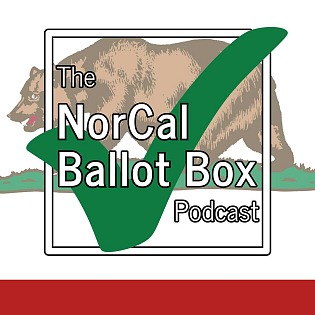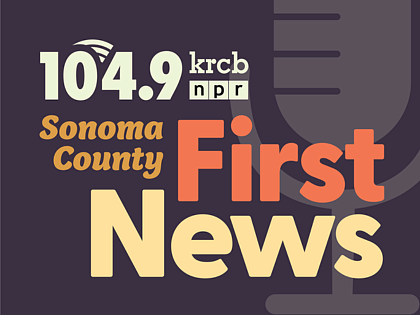KRCB has more in this ongoing series on the future of Sonoma County's underground water reserves.
 Sonoma Valley GSP Cover
Sonoma Valley GSP Coverphoto credit: Sonoma Valley GSA
Regional groundwater sustainability plans were recently approved by state water regulators, earlier than expected. Sonoma County is home to around 40,000 registered wells.
Groundwater is central to the everyday life of Sonoma County, its people, its plants, and its produce.
As the climate shifts, Marcus Trotta, groundwater expert with Sonoma Water, said management of groundwater in Sonoma County will shift as well.
"One of the requirements of the plans that the state has required is that the plans project conditions out 50 years into the future," Trotta said.
The recently approved groundwater sustainability plans for the Santa Rosa Plain, Petaluma Valley, and Sonoma Valley, Trotta said, include extensive climate modeling.
"We utilized future climate scenarios that include both wet periods as well as pretty extreme droughts in the case of the climate future," Trotta said.
A major issue facing water managers in California is the increasing unpredictability of precipitation.
Sonoma Water is part of a trial called FIRO, Forecast Informed Reservoir Operations. FIRO aims to use current data modeling and weather forecasts instead of relying on outdated storage calculations to help retain more water in reservoirs during wet periods.
Trotta said the three Sonoma County groundwater sustainability plans take a similar approach, avoiding inaccurate or arbitrary benchmarks.
"These plans are not really tied to any specific wet period or dry period and they really take into account the variability of future climate," Trotta said. "They're very much meant to be adaptive going forward so that as we get new information, we're able to make changes to the plans and maybe re-prioritize certain projects as conditions dictate."
One of the current tasks for the groundwater sustainability agencies: filling in data gaps for the local basins.
Paul Gosselin with the California Department of Water Resources said the state hopes to help fill that gap.
"So I don't know if you've seen those helicopters with the big hoops under it," Gosselin said. "One major project we've done is using a geophysical method called airborne electro-magnetic method to acquire data to look at the geologic architecture going down almost a thousand feet."
Gosselin, like Trotta, said there is still lots to be learned about our aquifers.
"This is very important data to help advance groundwater recharge cause it will show where those pathways are to get down to the basin and when it gets down there where other pathways the water may go," Gosselin said.
Gosselin also noted that gaining knowledge of aquifer pathways, whether in creeks, flats, or hillsides is critical for successful groundwater recharge projects.
"Just putting water on the ground is not necessarily going to get you the results you need," Gosselin said. "You need to understand the geology and the hydrogeology of the basin because, you know, nature does not provide us with a homogeneous set of sands and gravels in a basin. It's very complicated. It can flow to different pathways and, and maybe leave where you think it's going to stay."
Local water officials say public feedback, interaction, and knowledge of groundwater use and sustainability are all vital to the success of the groundwater sustainability plans.
Sonoma Valley is already experiencing high levels of groundwater use, prompting concerns over saltwater intrusion in the southern portion of the aquifer from neighboring San Pablo Bay, as well as concerns over possible groundwater depletion in other areas.
With crucial data gaps in the hydrology of the Petaluma Valley basin and the pathway of streams in the Santa Rosa Plain, Trotta said interacting with your local GSA is a great way to help.
"In most areas, groundwater use is not measured or reported, and so our estimates are only good as the data we have," Trotta said. "So we're in the process now of working with groundwater users and, you know, overall it's really making improvements to our understanding and information on groundwater use within the basins."
A task, as Gosselin said, we can all play a role in, "trying to demystify what's below the ground."

 Live Radio
Live Radio




